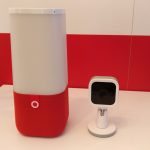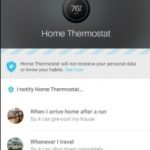IoT and LPWA: Perfect partners in a connected world
IoT and LPWA: Perfect partners in a connected world

Twenty years ago I was approached by a vending machine company that wanted to remotely monitor and record the temperature of their vending machine compartments to the nearest tenth of a degree. I understand that no one wants a warm soda, but the data the company wanted to record was more granular than necessary to solve their problem. The vending machine only needed to communicate whether it was above or below the recommended serving temperature of 38℉; measuring to the nearest tenth of a degree was overkill. We encoded the vending machine’s data in a much smaller size, which saved the vending machine company money on data rates while still giving the customer a cold soda.
I share this story to highlight a question decision makers for industrial, civic, and commercial Internet of Things (IoT) should be asking themselves: is it worth paying to collect and transmit data that is more detailed than you need? If the answer is “no,” then you should consider using a Low Power Wide Area (LPWA) network.
More data, more problems
The gap between consumer data needs and the data needs of industrial and civic IoT programs is wider than ever. Cellular networks are the current de facto standard for IoT, but they are built for the needs of smartphone users: faster connections and more data. Consumers pay a high price to quickly send and receive large amounts of data, not only for the data plan but also for the hardware and batteries necessary to keep up with cellular’s constantly evolving capabilities. While the idea of piggybacking off of a system built for smartphones seems appealing, the price to keep up with cellular’s evolution doesn’t make sense for industrial and civic IoT.

Syed Zaeem Hosain,
Chief Technology Officer, Aeris
The first problem with using cellular networks for industrial or civic IoT applications is longevity. To keep up with the Long Term Evolution (LTE) of cellular networks, organizations continuously need to upgrade their equipment much like smartphone users have to buy a new phone every three to four years. For cities or organizations with hundreds, thousands, or even millions of connected devices, upgrading every three to four years is not only expensive but would also be a logistical nightmare.
The second problem that cellular networks present industrial and civic organizations are cellular networks’ high power requirements. Even the best smartphones on the market need to be recharged after a day of regular usage. The primary reason for smartphones’ low battery life is the amount of power required to send large amounts of data through a cellular network. Luckily for consumers, they can simply recharge their phone, but most machines used in industrial or civic IoT applications need a battery than can last a long time on its own.
For many industrial and civic IoT applications, the data capabilities of cellular are overkill. By creating a separate network to transmit small amounts of data, LPWA solves many of the longevity and power issues presented by cellular networks.
Reduced data for a reduced cost
Let’s talk about the biggest motivator for LPWA network adoption for industries and cities: reduced cost. By creating a separate network to transmit small amounts of data, LPWA solves many of the longevity and power issues presented by cellular networks. Unlike cellular LTE networks, LPWA networks do not have to evolve to address growing data needs, so sensors and radios designed for LPWA use won’t become outdated. Batteries on LPWA connected radios and sensors also last a lot longer than batteries used in cellular networks, in some instances up to fifteen years. The increased longevity and battery life of LPWA devices significantly reduce labor costs associated with changing the hardware and batteries on hundreds, thousands, or even millions of remote devices.

LPWA networks’ increased battery life does come at a small cost: slower transmission speeds. But the latency associated with LPWA networks is only a few seconds up to a couple minutes depending on the protocol and size of the data being transmitted. So while LPWA networks excel at applications that aren’t time critical, such as monitoring water leaks on farms or traffic patterns in cities, they may not be ideal for applications where data could mean life or death such as a heart monitor.
Just as decreasing transmission time saves battery power, so does sending less data. LPWA networks are designed to transmit simple information that can fit into a few bytes of data. This is ideal for M2M communication in industries and cities where the data being transmitted is a simple operational condition (like the vending machine example) or basic metrics like temperature, moisture content, volume, etc.
One of the few wireless technologies to beat LPWA’s price point is Bluetooth, but Bluetooth’s range is less than desirable for large-scale IoT operations. Whereas an LPWA network can transmit anywhere up to 5 miles in wide open spaces, Bluetooth has a maximum range of about 100 meters. Bluetooth’s range is inadequate for most large-scale civic and industrial IoT infrastructures that span across cities, fields, or factories.
Under budget and ahead of the curve
Any industry or city will need to be mindful of budget when instituting an IoT network. We already discussed the increased battery life and longevity of LPWA, but there are other cost-saving benefits to consider. Radio costs are much lower for LPWA networks than cellular networks. LPWA radios and modems are shooting for a sub $ 5 price point, while cellular radios and modems can range anywhere from $ 15 to $ 25. A $ 10 to $ 20 saving per module is significant enough to attract large-scale industrial and civic operations into the IoT fold.
LPWA technologies and protocols fit the needs of industries and cities whether they are starting from ground zero with their IoT infrastructure or already have some monitoring in place. Industries and cities starting from scratch may find a LoRa Alliance system’s open source code beneficial. But a city that already has sensors set up on a cellular network and wants to make the transition to an LPWA network may consider a company that has developed the LPWA infrastructure to interact with the IoT sensors and equipment you already have; you just pay a licensing fee to run their protocol.
Wide area coverage is going to be a necessary requirement for cities and industries deploying an IoT infrastructure. And while LPWA is just one type of IoT network, Machina Research estimates there will be more than three billion LPWA connections by 2023. If this estimate is correct, LPWAs will collectively be the dominant form of wide area machine-to-machine (M2M) connectivity technology.
It’s safe to say that Industries and cities that embrace IoT and LPWA together on their journey from unconnected products to connected services will find these two technologies uniquely suited for each other.
The post IoT and LPWA: Perfect partners in a connected world appeared first on ReadWrite.
(26)














